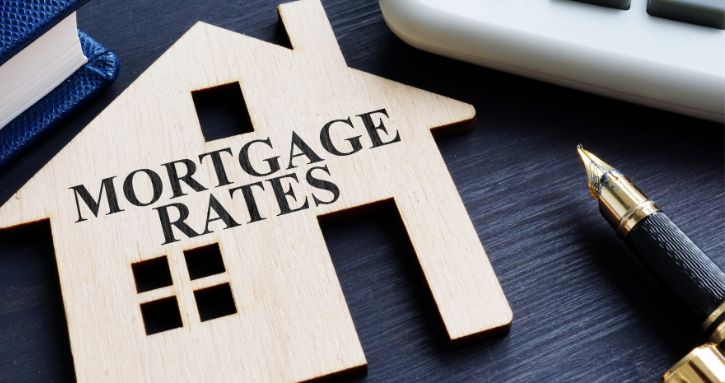3 Essential Elements Impacting The Affordability of Homes
Despite widespread discussions on home affordability challenges, there is a glimmer of positive news. Mortgage rates, akin to the cost of borrowing money for a home, have recently experienced a decline. However, a comprehensive evaluation of the elements impacting the affordability of homes extends beyond mortgage rates, incorporating a triad of essential elements: mortgage rates, home prices, and wages. Let’s see the current landscape of each factor to understand why the prospect of affording a home may be improving.
1. Mortgage Rates
Understanding how mortgage rates work involves looking at different parts of the economy. One important factor is inflation, which affects how much it costs to borrow money for a home. When prices go up, lenders might charge more for loans. Another thing to consider is how much people are borrowing during times when the economy is growing. When more people borrow, lenders might raise interest rates. Even though the government (the Federal Reserve or Fed) doesn’t directly control how much it costs to borrow for a home, its decisions can still have an impact. For example, when the Fed changes to the Fed funds rate, it can indirectly affect how much lenders charge for loans.

Bond market conditions are another factor that can affect mortgage rates. Bonds are like a way for the government to borrow money; their prices and yields give lenders an idea of what’s happening in the economy. If things in the bond market change, lenders might adjust how much they charge for mortgages. Interestingly, the housing market itself can also play a role in mortgage rates. When fewer people are looking to buy homes, lenders might lower rates to attract more borrowers. This happens because there’s less demand, and lenders want to keep people interested in taking out mortgages. In simple terms, understanding mortgage rates means looking at how different parts of the economy, like inflation, economic growth, the Fed’s decisions, and the housing market, all work together to determine how much it costs to borrow money for a home.
Freddie Mac reports a slight increase in mortgage rates, reaching 6.69% for the 30-year fixed-rate. Despite this uptick, rates remain within a narrow range, prompting potential homebuyers to re-enter the market. Affordability concerns persist, but the stabilized rates are encouraging activity. Despite inventory challenges, a busier spring homebuying season is anticipated compared to 2023, accompanied by a steady increase in home prices.
2. Home Prices
Another important thing to consider is how much homes cost. You’ve probably heard a lot about home prices going up a ton in the past few years, especially during the pandemic. But now, they’re not going up as fast. This is happening because the cost of borrowing money for homes, known as mortgage rates, has gone higher. That’s making fewer people want to buy, which means there’s not as much competition among buyers, and prices are not rising as quickly.
But even though prices are not going up as fast, they’re still way higher than they were before the pandemic, as you can see in the blue line on the graph. We’re still far from the normal times when home prices used to go up around 4% each year. When both elements impacting the affordability of homes, such as mortgage rates and home prices, are high, it becomes harder for you to afford a home and have enough money to spend on other things. Some places might see prices going down a bit, but it depends on where you live. If you want to know what’s happening in your area, you should talk to a real estate expert you trust.
3. Wages
The cost of housing is a big concern, especially for those who earn lower wages. Living expenses are going up, especially in big cities, making it tough for people with lower incomes to afford a place to live. This is a real struggle for those earning the minimum wage, as their pay is often not enough for their basic needs, let alone a place to stay. It creates a cycle of poverty, where people find it hard to pay for food, transportation, and other essential things, not just housing.

When housing costs a lot, people with lower wages often have to make tough choices between paying for a place to live and other necessary things. They might need to move to areas where it’s cheaper, leading to longer travels to work and fewer job options. It can also make poorer areas more crowded, as more people have to live in the same place. Having a higher minimum wage would make a difference in these problems. With more pay, people could afford housing without giving up other important things. They might also have extra money for saving, education, and improving their skills.
Raising the minimum wage doesn’t just help individuals but also positively affects the whole economy. When the minimum wage goes up, workers and their families become healthier, neighborhoods get safer, and the pay gap between different groups of workers decreases.
Implications for Prospective Buyers
For individuals contemplating homeownership, the encouraging news is that the key determinants of elements impacting the affordability of homes align favorably. The trajectory of mortgage rates, home prices, and wages is trending positively for potential buyers.
If you find yourself ready to take on the journey of homeownership, the landscape appears promising. Establishing a connection with a reliable real estate agent is recommended to stay knowledgeable about these factors. Their insights and updates can empower you to make educated decisions, ensuring you confidently navigate the evolving market conditions.
Resources:





